IBM Supply Chain
Shared Visibility Ledger
Problem Space
The communication systems among organizations in supply chain are inefficient outdated. A pain point that supply chain practitioners experience is that they don’t have “visibility” into pertinent information. For example, they might not know when to expect a shipment from their supplier that has been picked up by a carrier.
To fix this problem, there is an opportunity to take advantage of an emerging technology known as blockchain that will allow for information to be shared in one place and for organizations to be held accountable.
My Role
UX Research Lead, UX Design
Goal
Although I started out as a UX Designer at IBM, I transitioned into more of a research role on this team, since I was the sole designer with research experience. My goal as the research lead was to better understand the supply chain sector and the various roles within it, as well as uncover barriers or current issues that impact those roles. I also sought to validate and define the key personas for Shared Visibility Ledger (SVL).
Research / Personas
Being a project from the ground up, there is little past research and no primary personas, so I borrowed personas from neighboring supply chain teams under the Watson Customer Engagement portfolio to use as jumping off points.

Existing personas from Supply Chain Insights team
I started recruiting people that matched the existing personas for interviews using a recruiting platform known as Respondent. IBM has its own supply chain team (IBM still sells mainframes!) that I talked to as well. I led the one-on-one interviews with 12 participants and encouraged product managers and other designers to sit in on the interviews.
From there, I gathered many findings and insightful quotes. While collaborating with the design team, we created team structure diagrams and work flow diagrams to better understand how supply chain teams function in their organizations.
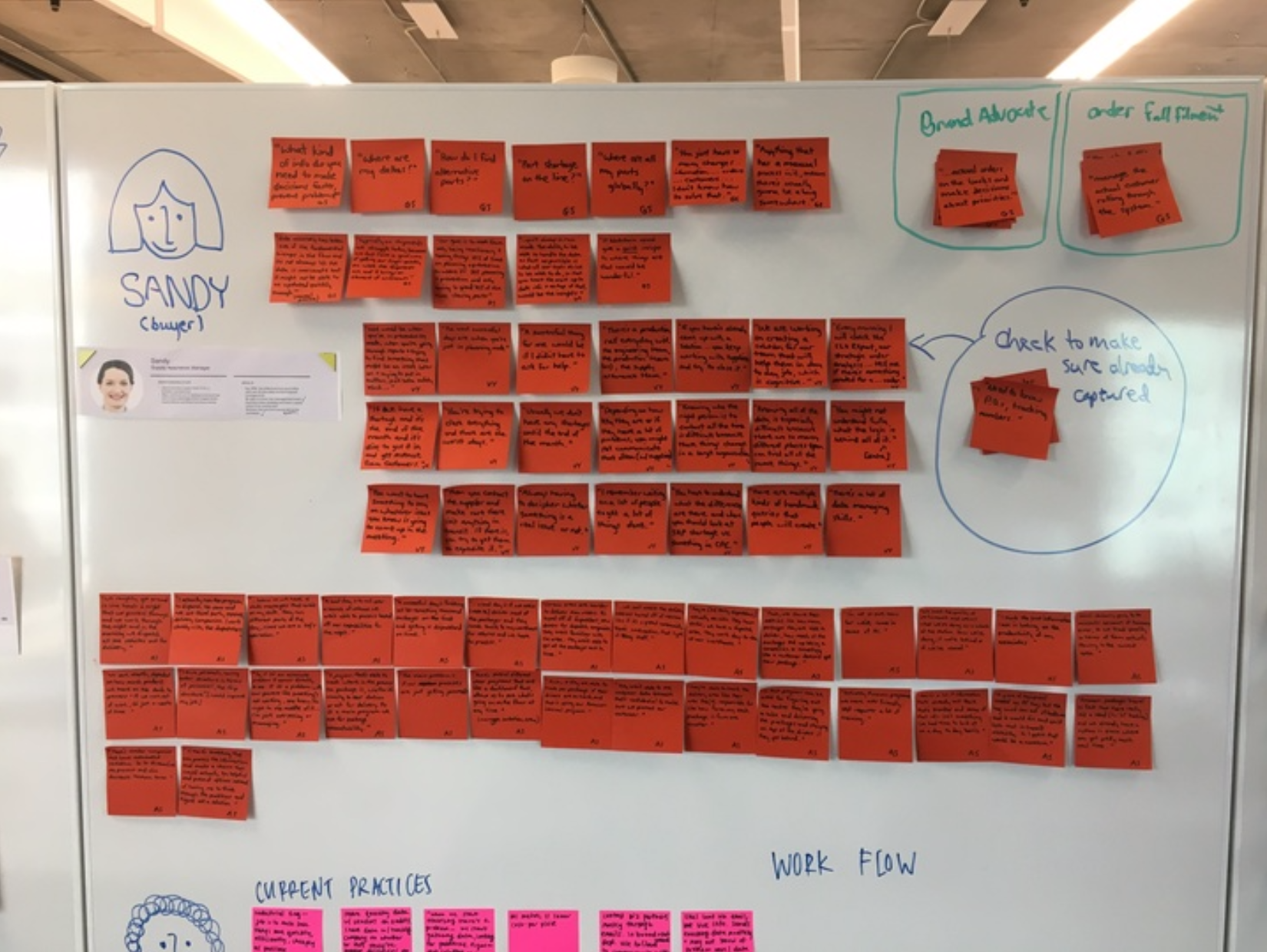
Affinitizing quotes based on persona

Example workflow
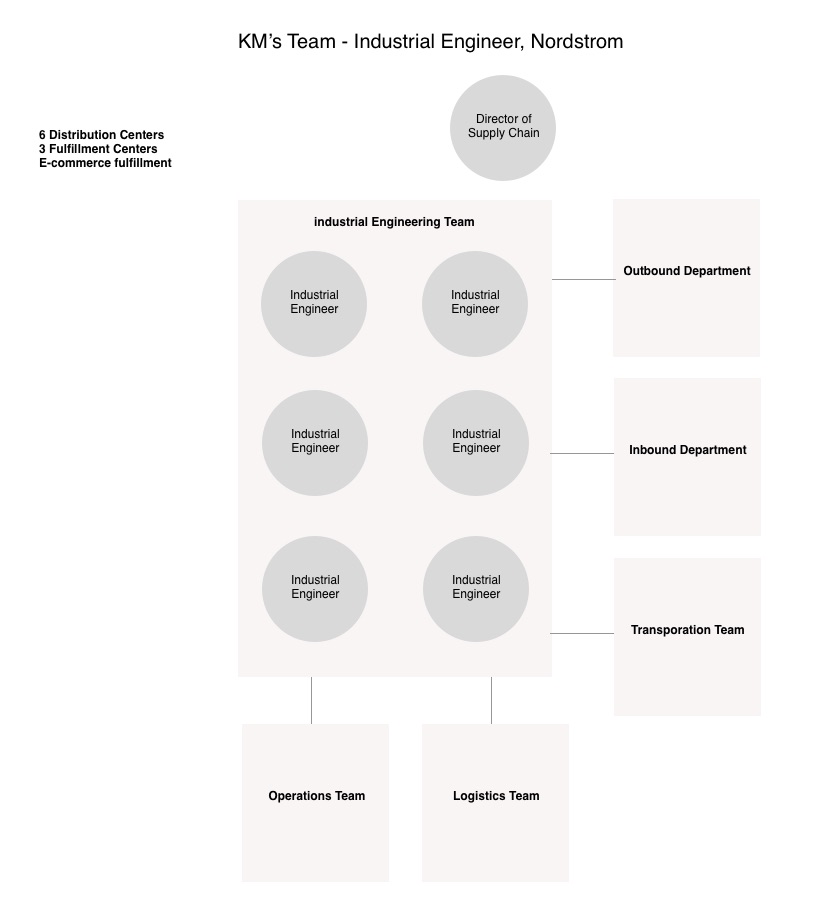
Example team structure diagram
To better synthesize the data and present it in a solutions-oriented way, my team and I organized the quotes using a task flow approach. We categorized the quotes based on a persona’s typical work flow. From there, each of us voted on the most stand-out quotes with star stickers and rated the sentiment (neutral, positive, negative) surrounding the tasks. This way, we could identify and rate the pain points and present opportunities.
![]()
![]()
Design
The research heavily informed the initial designs for this product. One of the main goals of the research is to identify the key personas. The specific personas had not yet been pinpointed from the initial phase of research, however I did know that the persona categories included supplier, buyer, and carrier. That means there would be at least 3 primary personas that would use Shared Visibility Ledger.
The research led to the first design milestone: onboarding set up for the users, which my team referred to as “Configuring a Ledger”.
![]()
![]()
The main design constraint my team had to work with was the fact that Shared Visibility Ledger was running on the Business Transaction Intelligence (BTI) platform. To put it simply, we had to follow both the Watson Customer Engagement style guide as well as BTI’s style guide. Also, there are many constraints in the technology that affected the designs.
More Research and Design
Our team had partnerships with clients known as sponsor users who we regularly engaged with to ask research questions and to share our designs. These sponsor users included JB Hunt, Husqvarna, Kimberly-Clark, and Toyota. I created research plans and led interviews with employees from the sponsor organizations.
![]()
I also used the UserTesting.com platform to conduct unmoderated usability tests on the wireframes. The feedback from the participants further allowed me to present and make design decisions on the Configuring a Ledger wireframes. After every set of interviews, I presented a research “playback” to the wider SVL team, which included product managers, engineers, and designers.
After several months of interviewing with participants in supply chain, I started to gain a better understanding of how certain roles fit in an organization’s supply chain. It was something very difficult to grasp for a long time because supply chain is extremely different across all companies. But I started to detect some patterns that allowed me to map out a general idea of the target personas.
![]()

Task flow based on persona
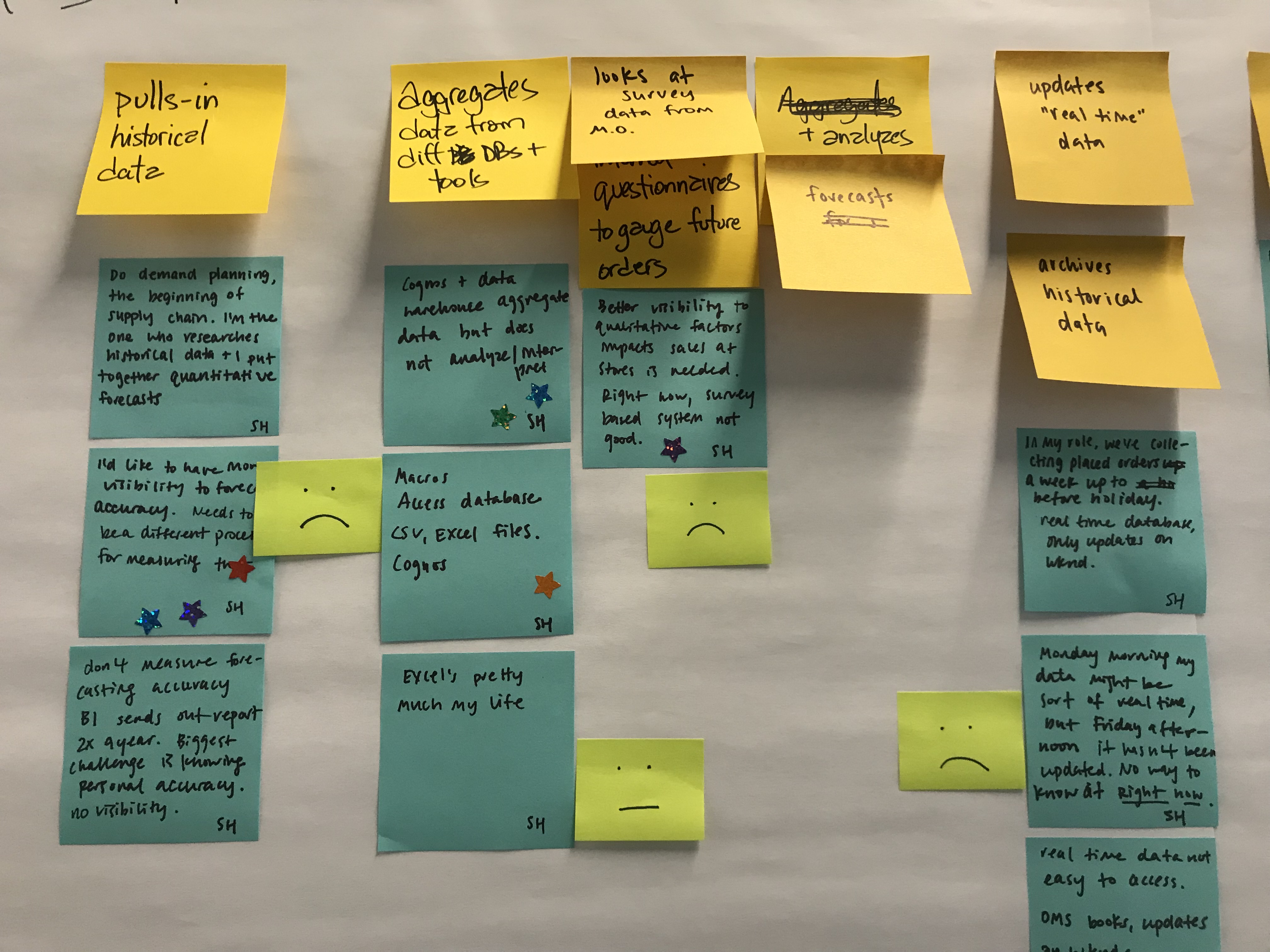
Sticker votes and sentiment post-its
![]() Task flow with sentiment analysis
Task flow with sentiment analysis
 Task flow with sentiment analysis
Task flow with sentiment analysisDesign
The research heavily informed the initial designs for this product. One of the main goals of the research is to identify the key personas. The specific personas had not yet been pinpointed from the initial phase of research, however I did know that the persona categories included supplier, buyer, and carrier. That means there would be at least 3 primary personas that would use Shared Visibility Ledger.
The research led to the first design milestone: onboarding set up for the users, which my team referred to as “Configuring a Ledger”.
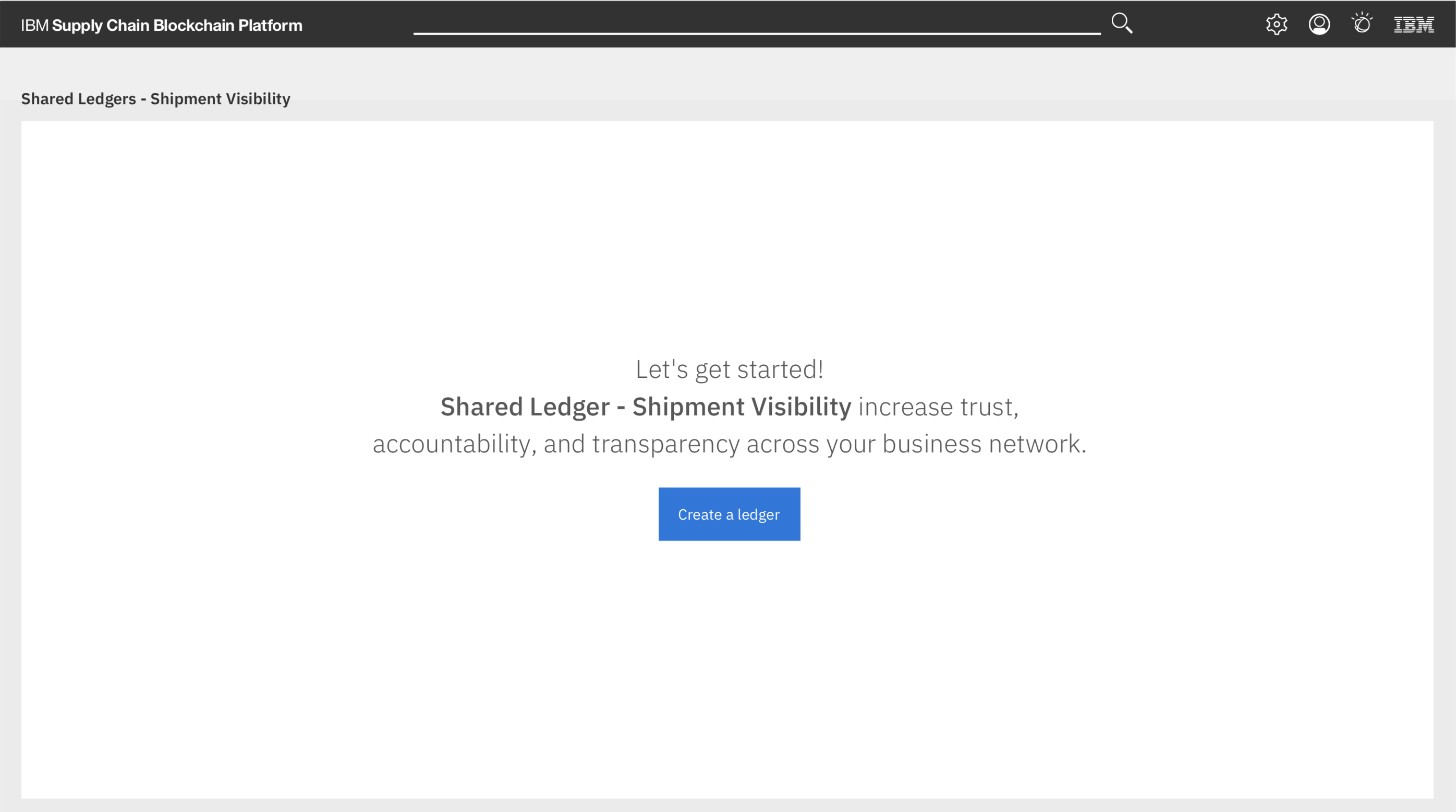
Getting started homepage
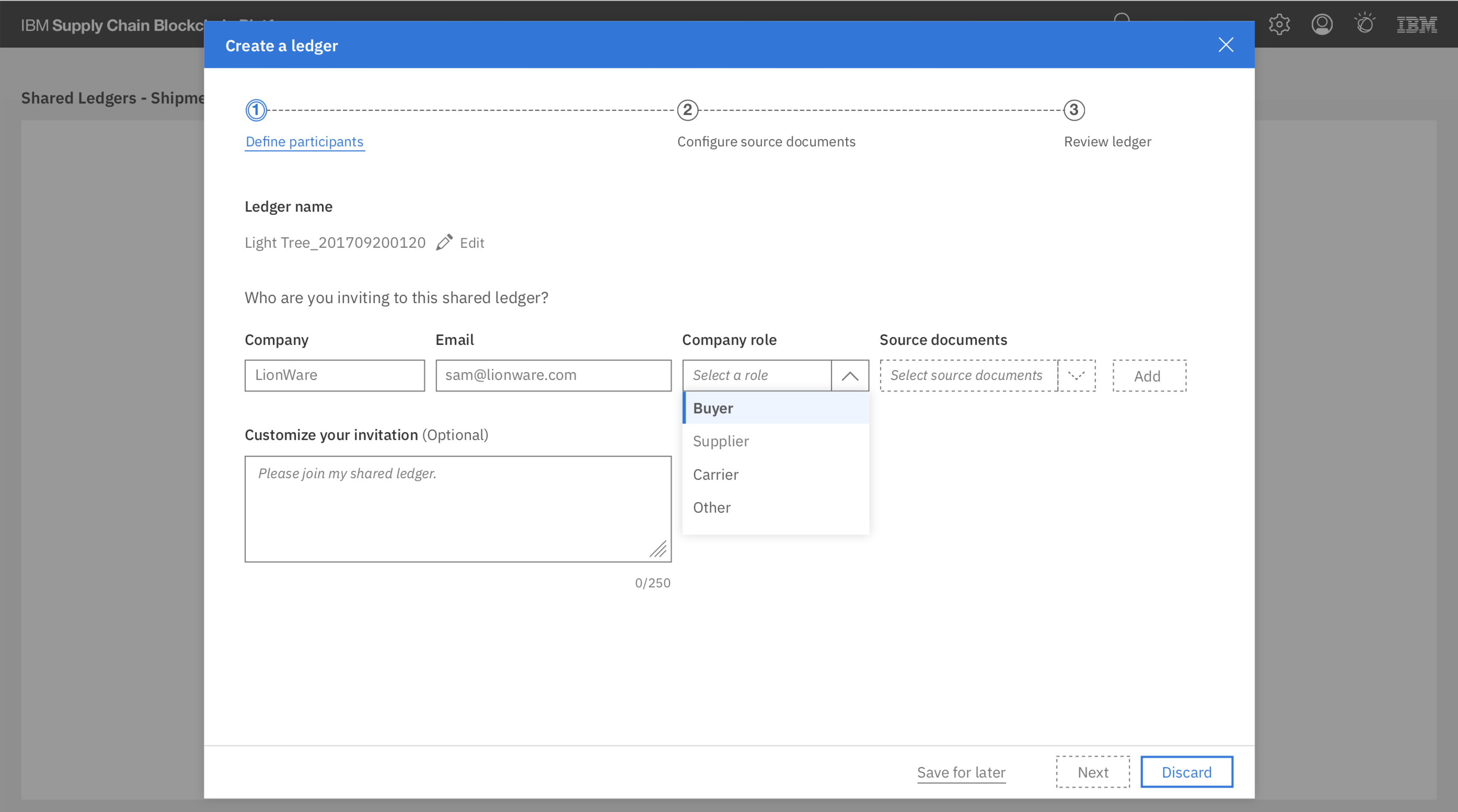
Making an account and inviting participants
The main design constraint my team had to work with was the fact that Shared Visibility Ledger was running on the Business Transaction Intelligence (BTI) platform. To put it simply, we had to follow both the Watson Customer Engagement style guide as well as BTI’s style guide. Also, there are many constraints in the technology that affected the designs.
More Research and Design
Our team had partnerships with clients known as sponsor users who we regularly engaged with to ask research questions and to share our designs. These sponsor users included JB Hunt, Husqvarna, Kimberly-Clark, and Toyota. I created research plans and led interviews with employees from the sponsor organizations.
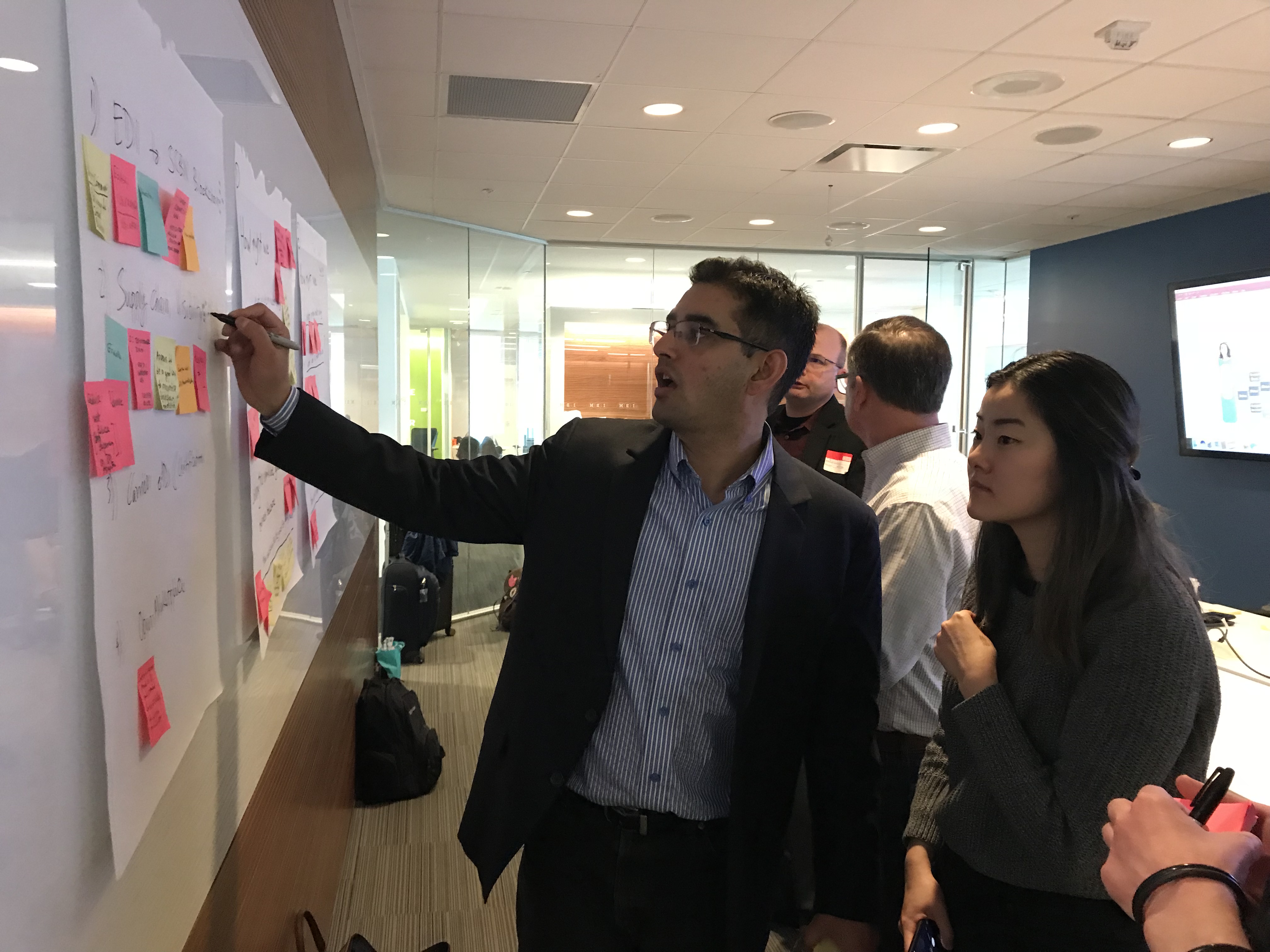
Identifying value propositions with JB Hunt
I also used the UserTesting.com platform to conduct unmoderated usability tests on the wireframes. The feedback from the participants further allowed me to present and make design decisions on the Configuring a Ledger wireframes. After every set of interviews, I presented a research “playback” to the wider SVL team, which included product managers, engineers, and designers.
After several months of interviewing with participants in supply chain, I started to gain a better understanding of how certain roles fit in an organization’s supply chain. It was something very difficult to grasp for a long time because supply chain is extremely different across all companies. But I started to detect some patterns that allowed me to map out a general idea of the target personas.
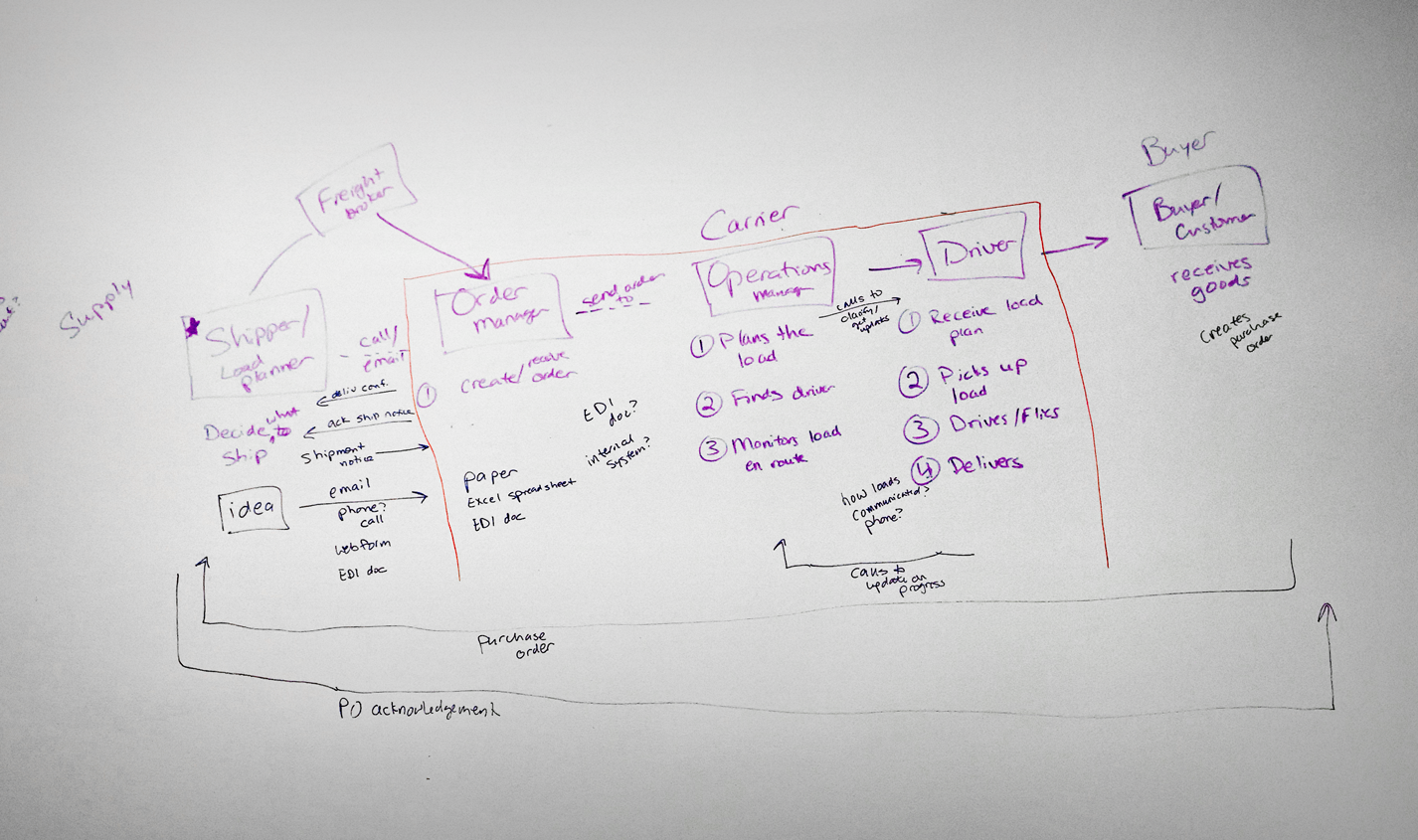
Sketch of personas within supply chain
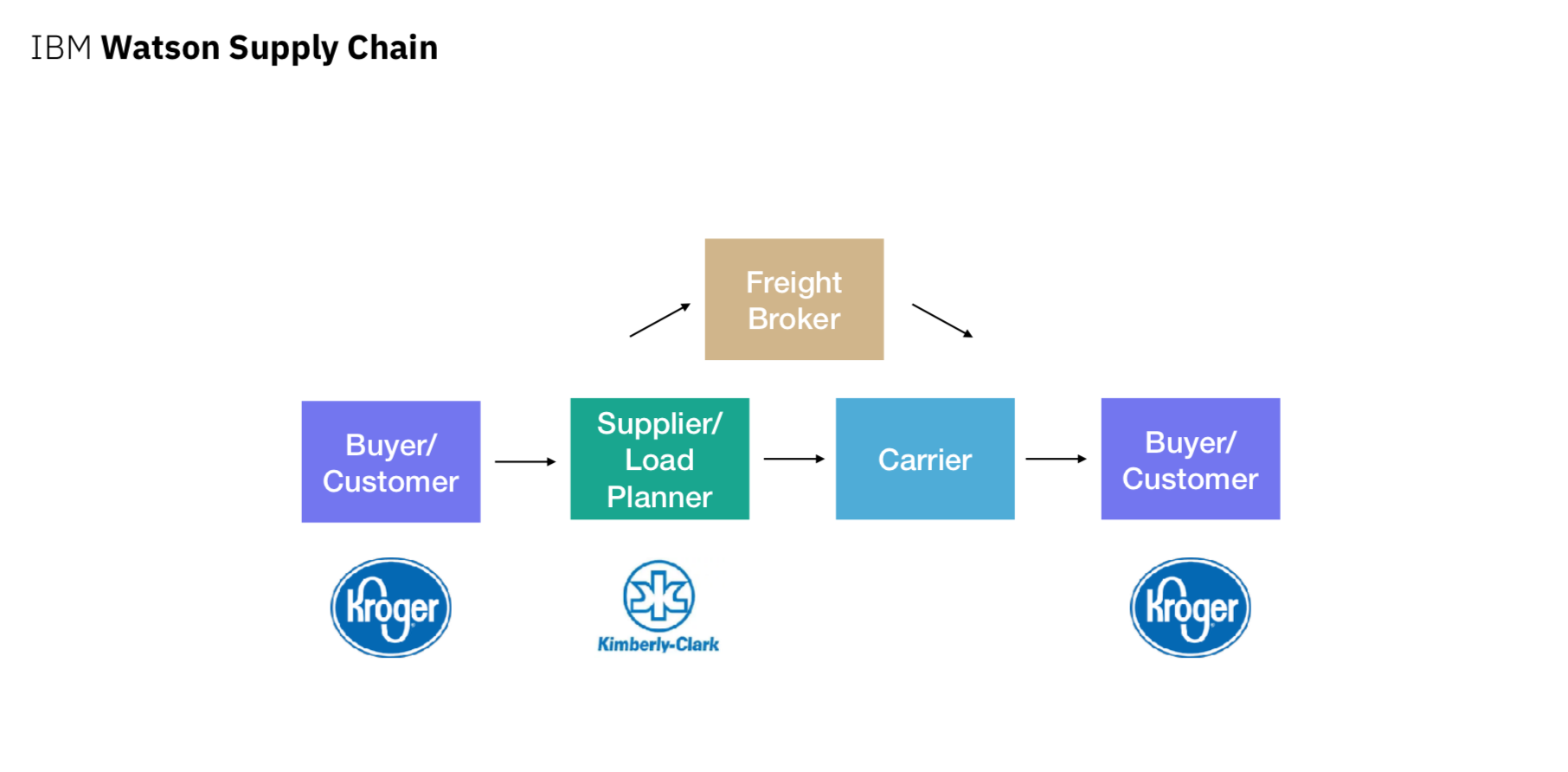
Buyer, supplier, and carrier

Main roles as a supplier
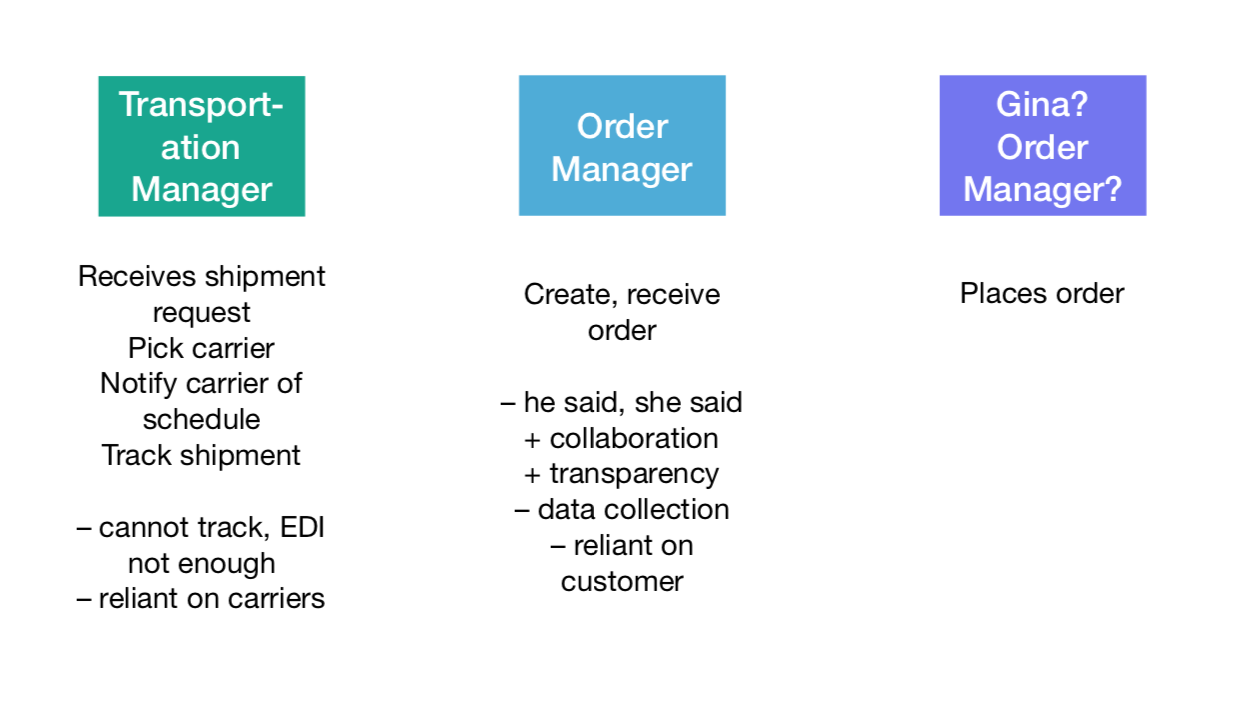
The top 3 key personas for SVL
With the key personas identified, I validated them with our sponsor users and interviewed more participants from Respondent. My team and I continued to create designs. The prototype below shows the alerts that an SVL user would want to know about — when a shipment is delayed, for instance.

Discrepancies and alerts
Outcome
The main takeaways from this project for me was learning to lead a team on research. A lot of my work involved me working independently as a researcher while also collaborating with the rest of the design team by educating them on the research.
I also experienced a steep learning curve as I sought to learn about supply chain while designing for it. I gained a better understanding of persona research and constantly iterated on the research. Much of the research led me to more questions than answers. Reflecting back, I realize that there was a lot of uncertainty, especially in the beginning. But as I worked through the uncertainty, I started to see how the pieces fit.
The minimum viable product was released in March 2018 and is due for a beta release by the end of 2018.